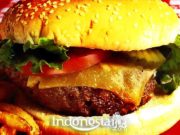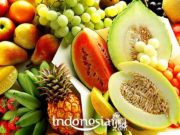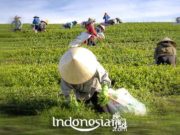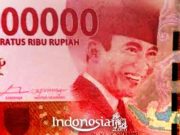Indonesia is an island country which has a rich variety of flora and fauna. This wealth grows and develops in various ecosystems. It is not surprising then that Indonesia is called a country with world megabiodiversity. As part of the world’s citizens, this country has a responsibility to protect it, namely to preserve the environment and nature from destruction and over-exploitation.
One of the steps taken to prevent this destruction is to include important conservation areas in the biosphere reserve program, also known as biosphere reserves.
This time, Indonesia should be proud again. What is the chapter? Yes, the World Organization of The United Nations Educational, Scientific and Cultural Organization (Unesco) through the International Coordinating Council Man and The Biosphere (ICC MAB) in its 32nd session, on Wednesday (29/10/2020), has just established three reserves Indonesia’s new biosphere.
The total area of the three new biosphere reserves is 2.23 million ha confirmed by the ICC MAB meeting in Paris, France. Unlike the previous trials, this trial was held online. However, the results of the decisions are still of high quality and Indonesia is very proud. Unesco’s determination of the three Indonesian biosphere reserves, namely Bunaken Tangkoko Minahasa (746,412 ha), Karimunjawa Jepara Muria (1.23 million ha), and Merapi Merbabu Menoreh (254,876 ha).
With the addition of three biosphere reserves, as stated by Executive Director of the National Committee of the Indonesian MAB Program-Indonesian Institute of Sciences (LIPI) Y Purwanto, in a recent press release, Indonesia now has 19 biosphere reserves covering an area of 29.9 million hectares which are part of the World Network of Biosphere Reserves (WNBR). “Of the total area of biosphere reserves owned by Indonesia, the area of conservation areas that become the core areas / core areas of biosphere reserves is 5.26 million ha or> 20% of the total area of the existing biosphere reserves,” said Purwanto.
Specifically for the biosphere reserve concept, Unesco has initiated it since 1971. The concept of a biosphere reserve is to manage an area aimed at harmonizing the needs of biodiversity conservation-socio-economic sustainability and sufficient logistical support. The conservation area is the core area. Apart from Indonesia with its 19 biosphere reserves, there are 714 biosphere reserves in the world, spread across 129 countries.
“The development and development of Indonesia’s biosphere reserves can be a means of carrying out the commitment of the Indonesian nation in implementing various conventions related to the environment, biodiversity and climate change,” said Purwanto.
Indonesia includes the largest biosphere reserves in the world. From its breadth, Indonesia’s role is very important to maintain the sustainability of biodiversity and sustainable development in the world. Some of Indonesia’s biosphere reserves include:
1. Gunung Leuser
Gunung Leuser National Park, commonly abbreviated as TNGL, is one of the Nature Conservation Areas in Indonesia covering an area of 1.09 million ha which is administratively located in two provinces of Aceh and North Sumatra. This National Park has been a biosphere reserve since 1981, the Gunung Leuser Biosphere Reserve itself has a core area of 792,675 ha which was established in 1980.
2. Siberut Island
The Siberut Biosphere Reserve is located in Siberut National Park (Mentawai Islands, West Sumatra) with a core area of 190,500 ha which was determined in 1993. On Siberut Island, 896 species of woody plants, 31 species of mammals and 134 species of birds were recorded.
3. Lore Lindu
Located in the province of Central Sulawesi and one of Sulawesi’s biodiversity protection locations. Designated a biosphere reserve in 1977 and part of the Lore Lindu National Park (Central Sulawesi) with a core area of 229,000 ha. This area is the habitat for the largest native mammals in Sulawesi, such as anoa and babirusa.
4. Komodo Island, Labuan Bajo
Although the Komodo National Park was only inaugurated as a world heritage site in 1991, the Komodo archipelago has been designated as a biosphere reserve since 1977.The Komodo Biosphere Reserve is part of the Komodo National Park (East Nusa Tenggara) with a core area of 173,300 ha which was established in 1990.
5. Mount Gede Pangrango
The Cibodas Biosphere Reserve was established in 1977. Currently, the core zone is the 22,851 hectare Gunung Gede Pangrango National Park. Cibodas Biosphere Reserve is located in West Java covering the areas of Bogor Regency, Sukabumi Regency, and Cianjur Regency. This area is a protected habitat for endemic animals, such as the Javan eagle and Javan gibbon.
6. Tanjung Puting
Tanjung Puting Biosphere Reserve was established in 1977, and then in 1982 its core zone was designated as Tanjung Puting National Park. This biosphere reserve is located in Central Kalimantan Province which includes Kotawaringin Regency. This area is home to orangutans, and is currently the largest orangutan rehabilitation center in the world. Some of them are Tanjung Harapan, Pondok Tanggui, and Camp Leakey.
7. Giam Siak
The Giam Siak Kecil-Bukit Batu area was designated as a biosphere reserve in 2009. This area is considered the most attractive because it has a core zone in the form of a national park, so it is different from other biosphere reserves which generally have a core zone within a national park.
8. Wakatobi Marine Park
This one is a marine biosphere reserve that belongs to Indonesia. Wakatobi Marine Park was only established in 2012 with the core zone of the reserve being the Wakatobi National Park, which was designated as a national park in 1996 and has an area of 1,390,000 hectares. This area consists of 39 islands, three burnt islands, and five atolls, administratively included in the Wakatobi Regency, Southeast Sulawesi Province.
9. Bromo-Semeru-Tengger-Arjuno
Although it was designated a National Park in 1982, its status as a biosphere reserve was only inaugurated in 2015. In this area there are 137 bird species, 22 mammal species and four protected reptile species. Including the ‘eternal’ flora, Javanese edelweiss.
10. Taka Bonerate
Taka Bonerate Marine Park is an area with the third largest atoll in the world. The total area of this atoll is 220,000 hectares with a distribution of coral reefs reaching 500 km which is located in Takabonerate District, Selayar Islands Regency, South Sulawesi.
11. Blambangan
This Cagas biosphere is a biosphere reserve which consists of three national parks, namely the Alas Purwo National Park, Baluran National Park, and the Meru Betiri National Park. The three of them are in the horseshoe area of Jember, Lumajang, Banyuwangi, Bondowoso, and Situbondo, East Java. This biosphere reserve which was inaugurated in 2016 has an area of up to 778,647 hectares.
12. Prayer and Prayer
The location of this biosphere reserve is on the east coast of Sumatra Island which consists of Berbak National Park and Sembilang National Park. Most of this biosphere reserve is peat soils and swamp forests and the mouth of the Musi river. The newly established biosphere reserve covers an area of 205,750 hectares.
13. Betung Kerihun Danau Sentarum Kapuas Hulu
The biosphere reserve consists of two national parks, namely the Betung Kerihun National Park and the Danau Sentarum National Park. The topography of the biosphere reserve in West Kalimantan consists of tropical forest hills which are mostly inhabited by flora and fauna.
14. Rinjani-Lombok
The Rinjani bio-sphere reserve is the fourth biosphere reserve covering a mountain area and is located in West Nusa Tenggara. This biosphere reserve consists of various kinds of forest vegetation, such as savanna, mountain and lowland rain forest. Most of this area is still in the form of forest, so it has a lot of biodiversity. Visit Indonesia and get the best, interesting and insightful information from Indonesiar.com.

































